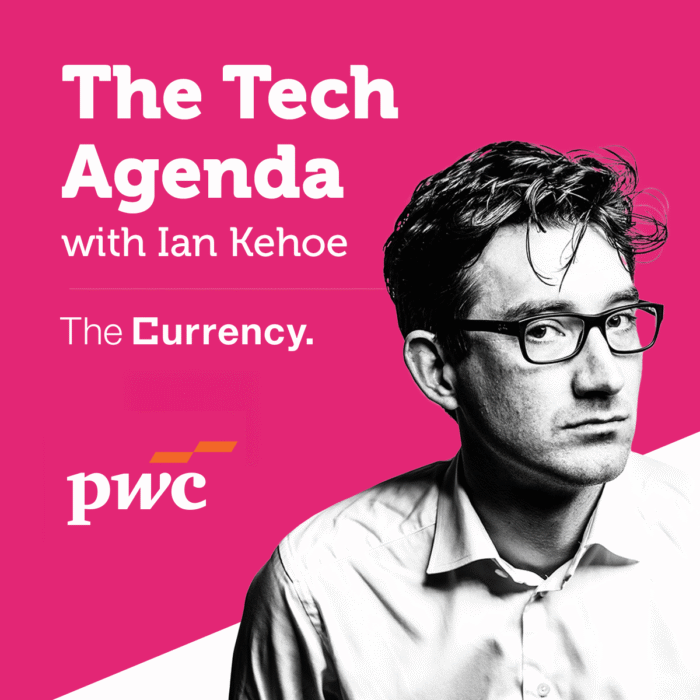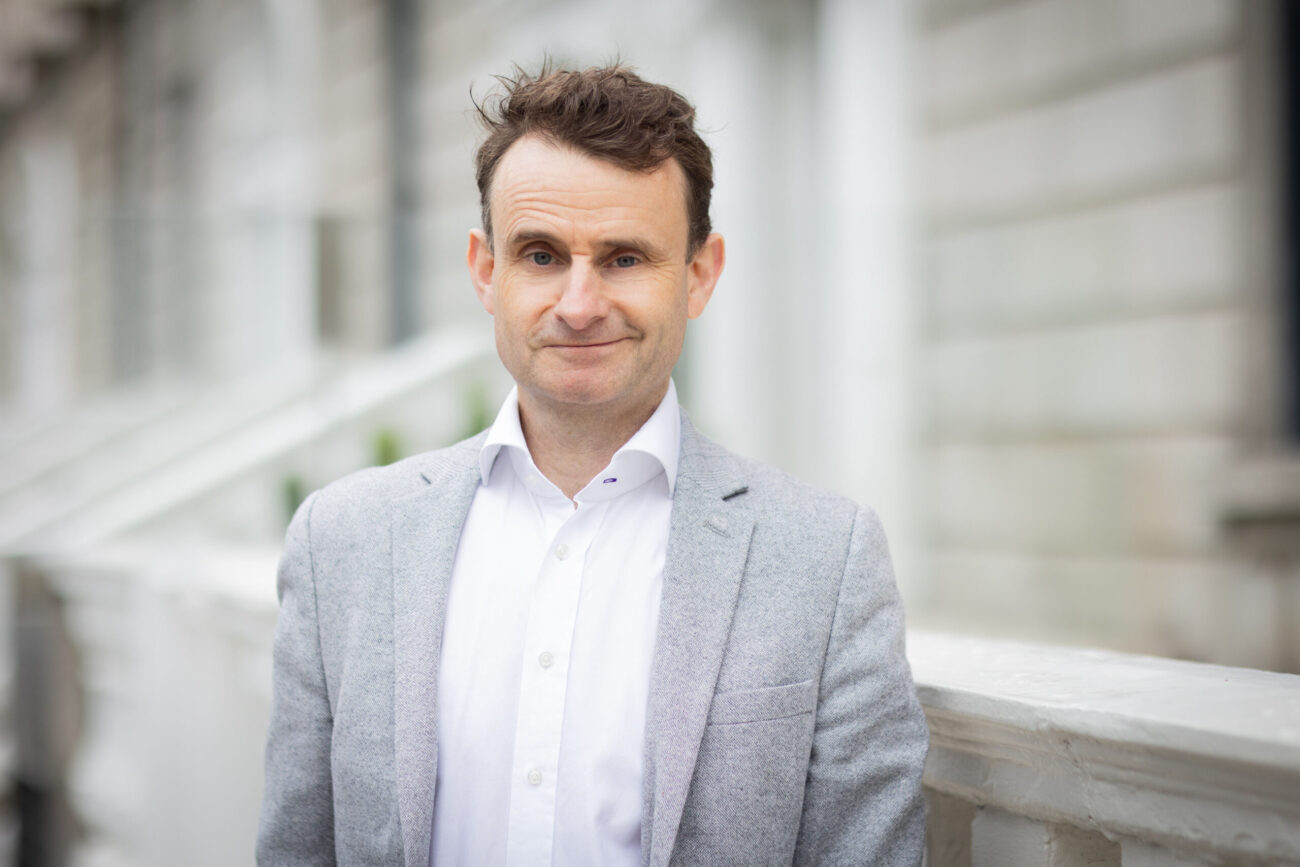When Darren O’Neill talks about business model reinvention, he is careful to avoid the usual clichés and platitudes.
Change is not new, he argues. Plus, the way O’Neill, Consulting Partner and Insurance Industry Leader at PwC Ireland, sees it, the world has been in a constant state of reinvention and today’s technology-led revolution is simply the latest — albeit one that presents a scale and pace of change without historical precedent.
“I think there’s a little bit of cliché about this,” O’Neill says.
“The world has been reinventing itself through many different revolutions, and we’re in the fourth revolution, technology-led revolution today.”
O’Neill argues that advancements in computing power, greater levels of connectivity, open-source innovation, and a surge in research and development have fundamentally altered the competitive landscape.
“The pace of change today is really unprecedented. We’ve got advancements in computing power, greater levels of connectivity. Obviously, we’ve got significant advances in AI. We’ve got greater levels of collaboration. We’ve got open source innovation. There’s increased investment in R&D right across industries, shorter innovation cycles,” he says.
“We have had the emergence of new technologies. And then sitting underneath all of that is the shift to the power of the consumer. So all of these factors have really driven this constant need for reinvention, for innovation, for changing the business model. And that’s essentially what this is all about.”
For O’Neill, the implication is clear: Companies that fail to embrace constant reinvention will not survive.
PwC’s 2025 global CEO survey backs up this argument – 42 per cent of global CEOs believe that their businesses will not be viable in ten years’ time if they do not reinvent how they operate.
“These are the leaders of organisations of all sizes, including family companies right across the world, who are looking at their businesses and feel, if we’re doing the same thing in 10 years, we will likely be out of business,” he says.
Interestingly, Irish CEOs appear slightly less alarmed, but still just under a third (29 per cent) anticipate radical transformation or extinction.
When I asked him about the difference between global and Irish CEOs, O’Neill offered a nuanced view.
“I definitely think it’s not complacency. I would put Irish CEOs up on the same pedestal as their global counterparts,” he says. “I think because we live in such an open economy, one that is so open to the perils of globalisation, I think reinvention is built into their DNA.”
He says that operating in a small, globally dependent economy demands a constant re-examination of markets, products, and partnerships. Irish CEOs are perhaps taking the learnings from their global counterparts.
The consumer as disruptor
Much of this transformation, O’Neill argues, is consumer-driven.
“25 years ago, the Internet was just starting to build itself,” he says.
“Then we had all these incredible advances in technology, including the ability to buy online, social media etc. Now AI and Agentic AI are really raising the bar in what consumers expect from the product and service providers that they engage with.”
His argument is simple: Consumers do not compartmentalise experiences – whether interacting with a streaming platform, a hotel, or an insurance company, they expect the same top-class service.
“When they look into some of the legacy industries – that have been around a long time and probably have more constraints than some of these digitally native sectors — they expect absolutely the same level of experience, the same level of service, the same level of transparency,” O’Neill notes. “That has really raised the bar in terms of consumers’ expectations.”
Insurance as a microcosm of reinvention
O’Neill’s career has focused on the insurance sector, and he views its current transformation as emblematic of wider industry disruption.
“I think the insurance sector is actually not untypical in terms of the level of disruption, transformation, innovation, that’s happening,” he says. “If I look at the Irish insurance sector, the competitive dynamics over the last number of years have changed very significantly.”
“Private equity investment, consolidation in distribution, and shifts in channel power have all upended traditional dynamics. Brokers and other intermediaries have an increasing level of influence, and that puts more pressure on the insurer,” he says.
And then there are the deeper structural challenges: ageing legacy IT infrastructures, and operating models built around policies rather than customers.
“Many insurers are still working on legacy technology that was potentially implemented decades ago,” O’Neill says. “For an insurance company, the operating model is very much built around the core insurance functions and the policy. It’s not built around the customer. Everything is built around getting a policy out to a customer, rather than the customers’ needs. This has resulted in functional silos across the organisation, which drives inefficiencies and often a disconnected technology and data ecosystem.”
He believes the lessons in this sector resonate far beyond insurance.
Across sectors, companies find that product-centric or transaction-centric models are no longer enough. Customer intimacy – understanding not just what customers buy, but how they live, interact, and evolve – has become critical, and this requires understanding how the customer interacts with you.
The core ingredients of reinvention
In a world where the future cannot be reliably forecast beyond a few years, O’Neill sees a number of foundational pillars for effective reinvention.
First, he says, companies must cultivate a micro-segmented, data-driven understanding of their customers.
“It is about the power of the consumer – really understanding who you are selling the product or service to – having a micro, segmented view of what their needs are,” he says. “You can do that today, because you have so much data on the people who engage with your business.”
Second, agility must move from theory to practice.
“The ability to respond to your environment is absolutely critical for any organisation,” O’Neill says. “Legacy technology brings rigidity. Innovation requires flexibility and disruption requires your business to adapt and reinvent itself for the changing times.”
Third, modern, flexible technology architectures must underpin the business. Without them, even the best strategies risk faltering. “Having a modern technology infrastructure, including Artificial Intelligence capabilities, is very, very important to take some of that rigidity out and also to lean into some of the benefits that these technologies can bring, including improved productivity and efficiency,” O’Neill notes.
AI and the new frontier of change
Artificial Intelligence occupies a central place in the current discourse on transformation. Yet O’Neill offers a balanced view.
“It is definitely front of mind for every business leader that we speak to today across all sectors,” he says. “I was born in the 70s, grew up in 80s Ireland, so I have got an ingrained level of scepticism, and I definitely lean into that when I think about things like AI.”
O’Neill believes that AI has enormous potential and will eventually become ubiquitous and transformational. But while there are leading-edge use cases in many sectors, many businesses are nowhere near that destination.
PwC advises clients to approach AI adoption through a phased model: beginning with education and experimentation, progressing through targeted proofs of concept, and eventually integrating AI into core operations.
“Pick some use cases that have an appropriate level of complexity plus a requirement for autonomous decision making. Use these to develop an understanding of the supporting AI technologies, how you organise your data, any regulatory or compliance requirements, the skills required in your team etc. Typically, organisations pick efficiency or productivity use cases — something that simplifies or automates a process with some level of autonomous decision making (in order to prove the AI),” he says.
This staged approach allows firms to build internal skills and capabilities while maintaining governance and regulatory compliance – critical in sectors like financial services, where risk and trust are paramount.
Beyond individual technologies, O’Neill points to a broader trend: convergence. In an increasingly interconnected world, the boundaries between industries are blurring.
“More and more, we see companies beginning to compete outside of their sector. Companies are saying: ‘How can we build an ecosystem that makes our brand, our products, our services more relevant to not just our consumer base, but to a broader consumer base?'”
There are multiple examples where we are seeing convergence across sectors: Mobility, Health & Wellbeing, Technology & Media, Financial Services. Embedded insurance is an example where we see convergence across the automotive, technology and insurance sectors. Another example is healthcare – where consumer devices such as wearables are essentially data capture tools that are being used in a broader ecosystem and support or drive lifestyle choices, medical interventions, insurance cover etc.
The balancing act
Ultimately, the path forward requires companies to master a paradox: They must be agile enough to pivot rapidly, but disciplined enough to maintain long-term strategic focus. According to O’Neill, they must embrace technology without succumbing to hype. They must forge ecosystems without diluting brand identity.
In O’Neill’s view, those who can achieve this balance will not just survive but thrive.
“I fundamentally believe AI will radically transform every single sector and people’s lives,” he says. “But we are not there today.”

The Tech Agenda with Ian Kehoe podcast series is sponsored by PwC.


